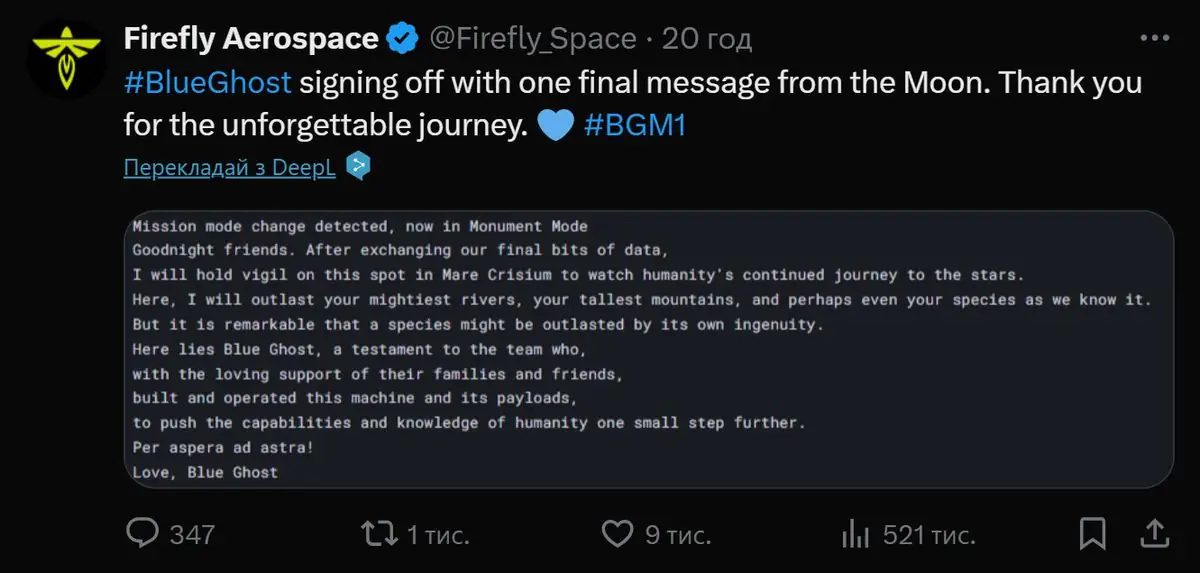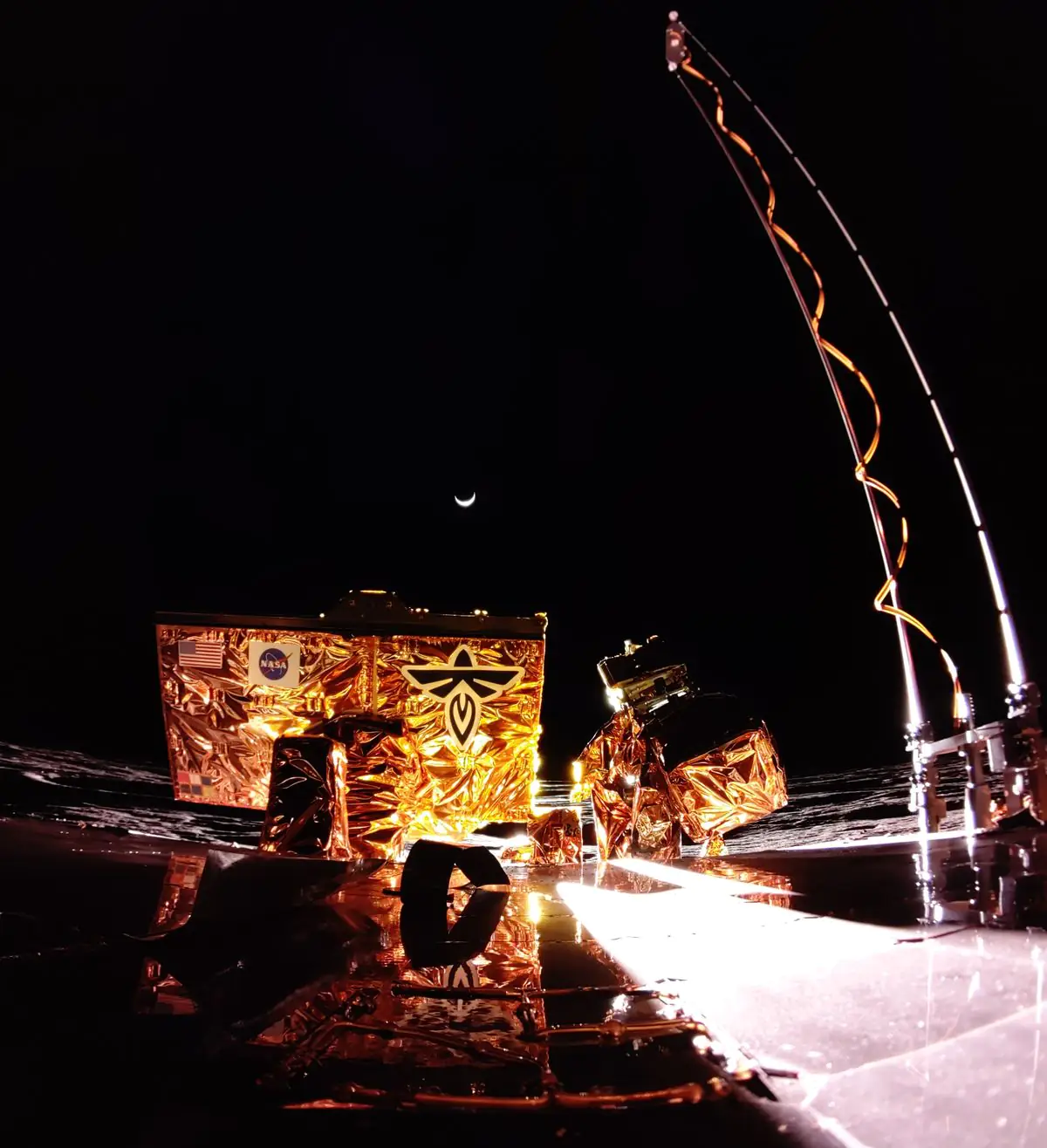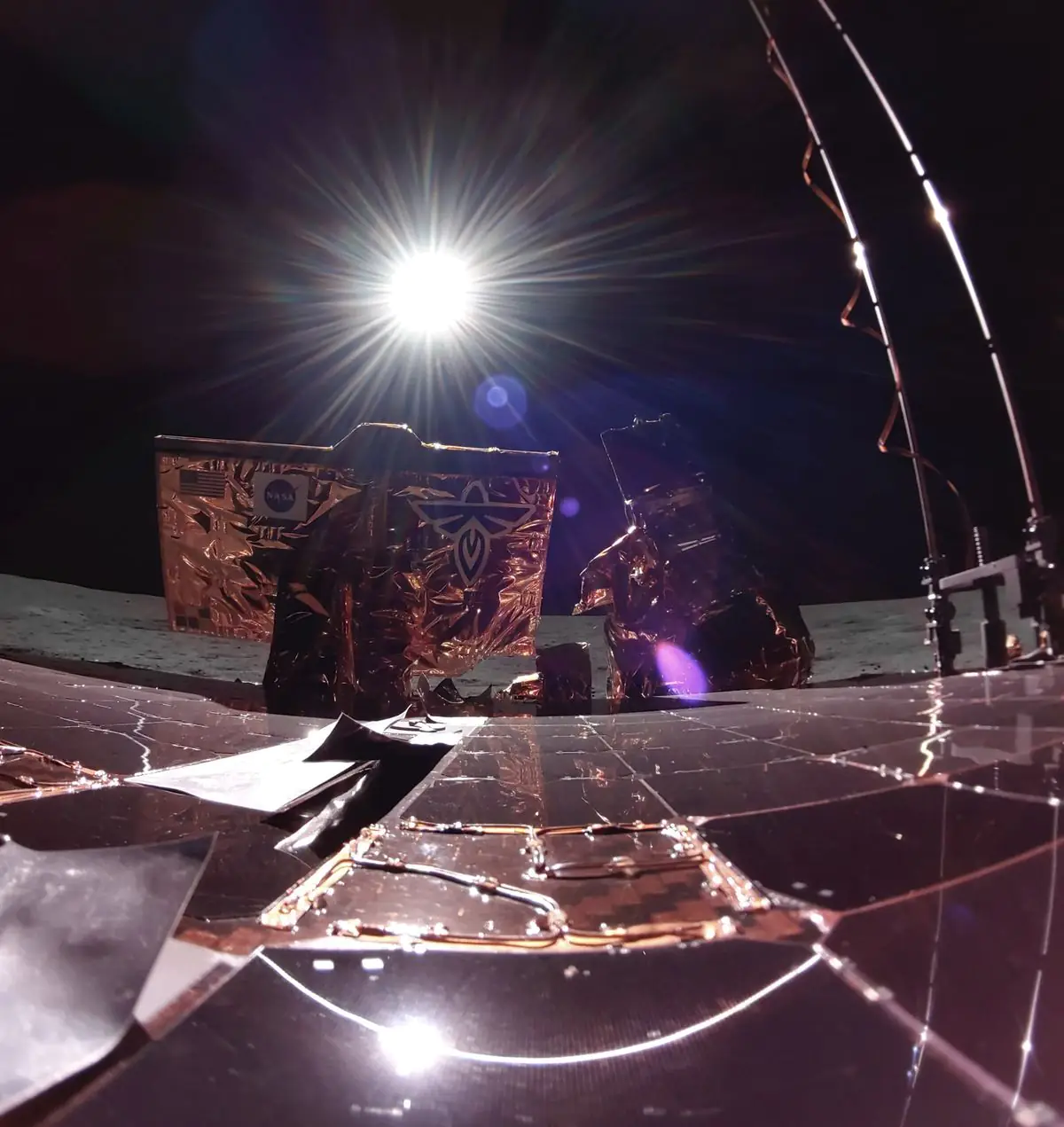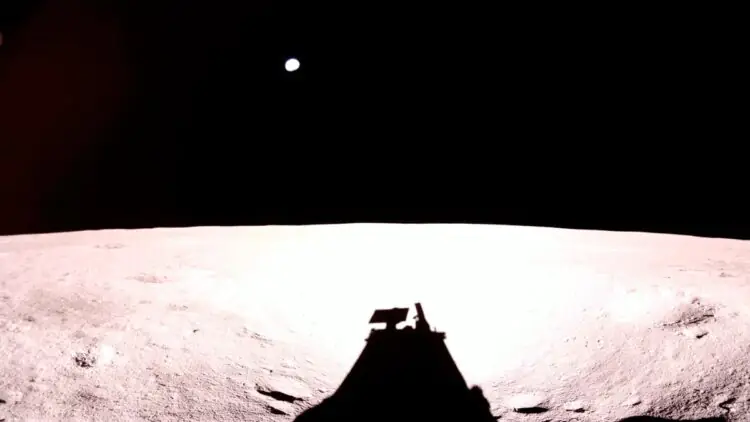The Blue Ghost spacecraft, developed by Firefly Aerospace, has completed its two-week mission on the Moon. The lander shut down as lunar night began, cutting off sunlight to its solar panels.
According to Firefly CEO Jason Kim, the mission is officially concluded, but Blue Ghost’s contributions to science will remain significant. The lander operated for two highly productive weeks and even continued functioning for an additional five hours after lunar night set in.

“We tested every system of the lander and modeled every mission scenario we could think of to get to this point,” said Will Kugan, chief engineer of Blue Ghost. “Our team may appear younger and less experienced than many countries and companies that have attempted lunar landings before us, but the support we feel for one another is what fuels the relentless work and dedication to finding every solution that made this mission successful.”
Blue Ghost was launched from Cape Canaveral in January as part of NASA’s Commercial Lunar Payload Services (CLPS) program. The program aims to deploy scientific equipment on robotic landers to gather large amounts of cost-effective data before astronauts arrive on the Moon as part of the Artemis mission. The module successfully landed on the Moon on March 2.

Blue Ghost successfully delivered 10 payloads for NASA to the basalt plain on the Moon’s near side, known as Mare Crisium. This marks the second successful landing of a private lunar lander in history. The first was the Odysseus spacecraft by Intuitive Machines, which landed in February 2024 and operated on the lunar surface for seven Earth days. However, Firefly’s module was the first to land without any technical issues.
The mission plan aimed for Blue Ghost and its scientific instruments to operate for one lunar day, or approximately two Earth weeks, and this was successfully achieved. The lander transmitted back 119 GB of data, including 51 GB of scientific information.

Even in its final hours of operation, the spacecraft remained productive. It captured images of the Moon’s sunset on March 16, providing NASA with data on whether lunar dust levitates under sunlight and whether it creates a glow along the lunar horizon, a phenomenon first suggested and observed by Eugene Cernan during Apollo 17, as reported by Firefly.
The Japanese spacecraft from ispace, which traveled alongside Blue Ghost, is scheduled to land on the Moon on June 5. Meanwhile, Firefly is already working on a new lunar lander and plans to conduct one landing per year.
Source: space









